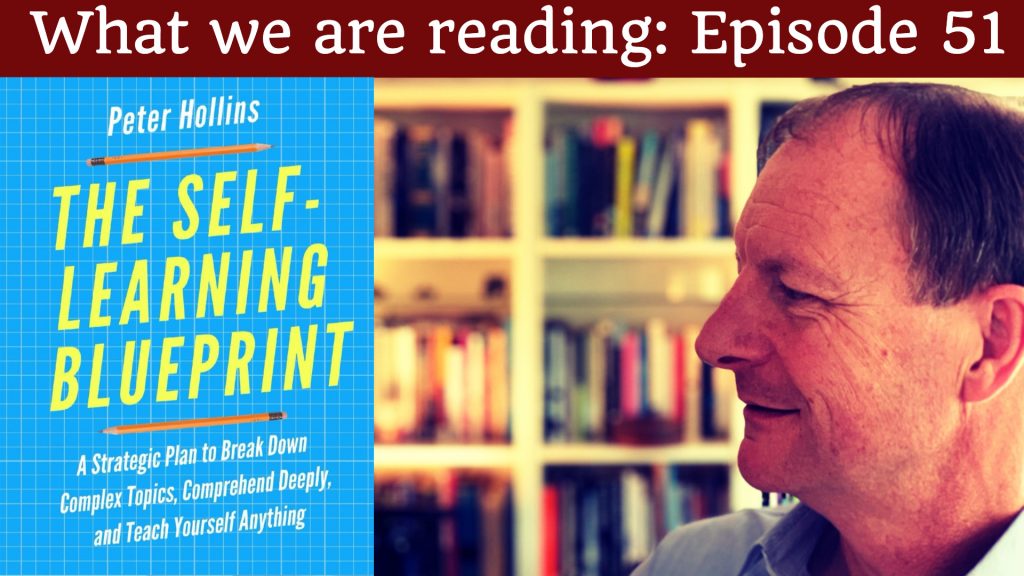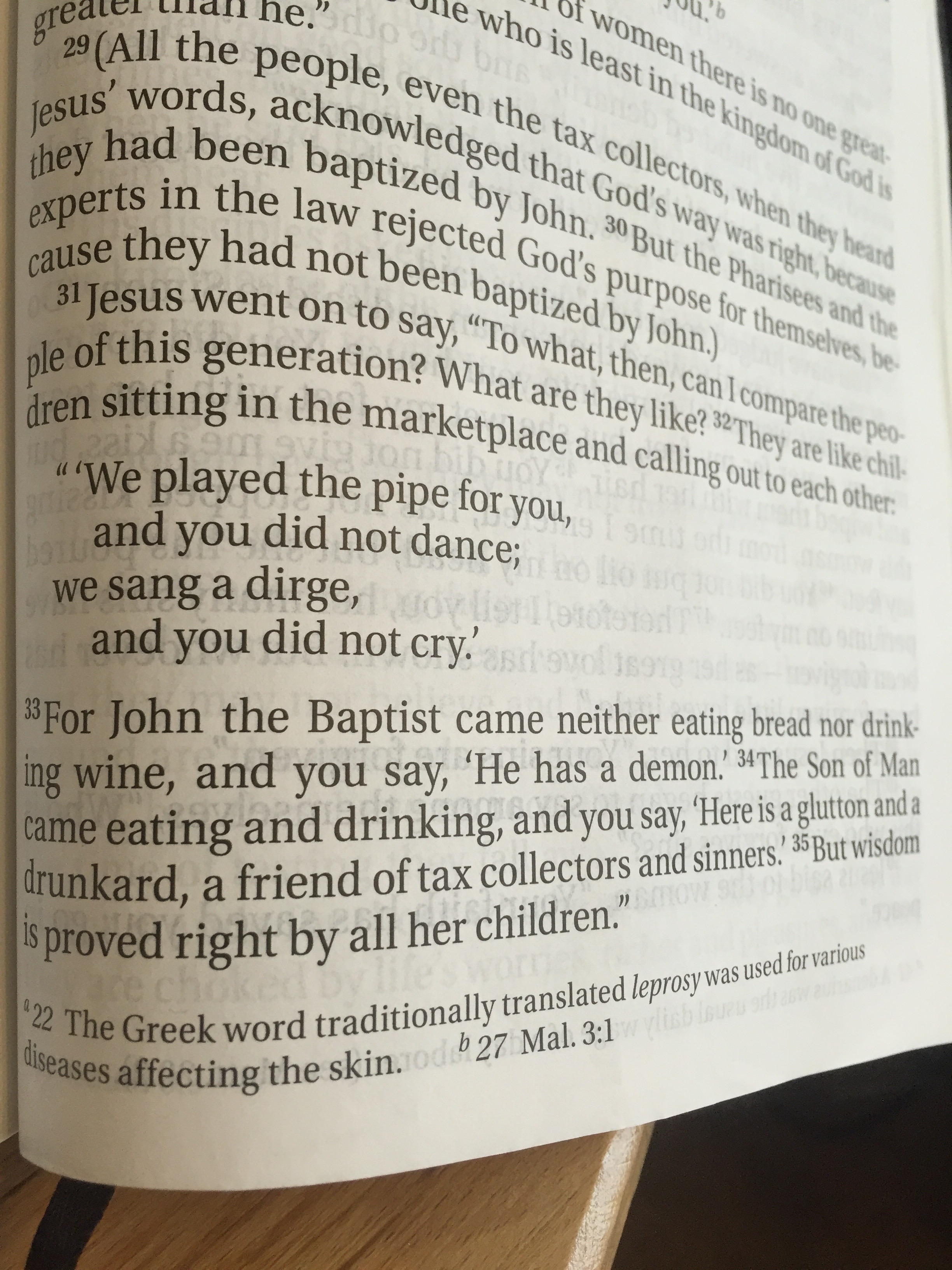What we are reading, episode 51

Subtitle: “A strategic plan to break down complex topics, comprehend deeply, and teach yourself anything.”
This week, let’s have a look at a book I’ve just finished called, “The self-learning blueprint”.
The author is Peter Hollins. According to his website he is:
“…a bestselling author and human psychology and behavior researcher. He is a dedicated student of the human condition. He possesses a BS and MA in psychology, and has worked with dozens of people from all walks of life. After working in private practice for years, he has turned his sights to writing and applying his years of education to help people improve their lives from the inside out.”
Table of Contents
Chapter 1: A Self-Learning Plan; The Myth of Requirements; Macro and Micro Planning
Chapter 2: The Four Pillars to Self-Learning; Transform and Synthesize Knowledge; Combine the New with the Familiar; Self-Testing and Retrieval Practice; Absorption Requires Space
Chapter 3: Tactics for Learning; Managing Your Attention Span; Pomodoro and Friends; Change Locations; Construct Vivid Imagery; The Question Master
Chapter 4: Navigating Obstacles and Failure; The Procrastination Cycle; Academic Buoyancy; Productive Failure; Inspiration Through Failure
Summary Guide
Why did I read the book?
As most of you will know, one of my special areas of interest is in preaching and teaching the Bible. But doing it effectively. In other words, it’s not enough to say the right words, to teach some truth, or even to convey some important information. A question must be asked and answered – is what I’m teaching connecting with people, and is it finding a home so that people can learn and grow?
I picked up this book, even though it’s not from a spiritual perspective, because I want to learn more about the science and technicalities of how we help ourselves learn and then help others. Many books exist on how to help others learn, and I am reading those also, but I wanted to read something which focused on how to teach things to myself. If I can become proficient at teaching myself, surely it will be easier to do so effectively in helping other people.
Many of the concepts in the book with familiar to me. They were, however, a few surprises. And even the topics of which I was already aware, there were some fresh thinking which were I found very stimulating.
Today I will not be giving you a blow by blow of everything in the book, just a few of the Ideas which had the most impact on me.
My Big Takeaways
- Test yourself: Simply cramming more stuff into the brain does not mean we learn it. Indeed, neither does going over the same material time after time. Highlighting has its place, but it does not guarantee learning. Testing ourselves is one of the best ways to settle information into the brain:”Instead of putting more stuff into our brains, retrieval practice helps us take knowledge out of our brains and put it to use. That’s what cements memory.” Hollins, Peter. The Self-Learning Blueprint: A Strategic Plan to Break Down Complex Topics, Comprehend Deeply, and Teach Yourself Anything (Learning how to Learn Book 3) (p. 78). PH Learning Inc.. Kindle Edition.I have downloaded the flashcard app Anki. Currently I am using it to learn the main principles from this book. Such spaced repetition, or distributed practice, is a way to ensure the Quality of the learning is high. It’s a myth that quantity is the defining factor.
 ANKI flashcard app
ANKI flashcard app
“…instead of measuring the number of hours you spend on something, try instead to measure the number of times you can revisit it.”
- Pay attention to your attention: What are the true limits to our learning? It’s not the capacity of our brains.
“…our capacity for learning is almost never limited by the time we have; it is more often limited by the energy and attention we have.”
It’s important to develop our own personally designed strategies to help us learn at the best rate and depth possible. A method I’ve heard of before but never used is the Pomodoro technique. Perhaps you’ve tried it. I have been experimenting. It consists of working for 25 minutes, then taking a short break. Sounds simple, but has a profound effect. When you’re working for those 25 minutes, you are not distracted by anything else. Open no secondary applications, do not glance at your phone. Everything can wait for 25 minutes, can’t it?
In my personal experience I have found the 25 minutes fly by. Not only that, but I get a lot done. Why not try it and let me know how it works for you?
- Change locations: One of the more surprising ideas in the book is that of changing locations when trying to learn something. In other words, don’t just sit at the desk. Go to a different part of the house, go outside, walk around whilst learning something.
“…if you change locations frequently while learning and processing the same information, you are strengthening your memory because it will be associated with multiple locations, smells, and general stimuli to make you remember it.”
Apparently this is known as ‘increased neural scaffolding’. I have taken to studying something at the desk on one occasion, and then studying the same material at the dining room table. A different view, a different chair, a whole different experience.
- Learning that learning is more important than learning: The process of learning is more important than the fact we learn. This is important because we often fail in our attempts to learn things. All the struggle gets so great we wonder if it’s worth it. Is there and that we must remember that as long as we are in the process of learning we are being victorious. Successful. To be commended. Especially to ourselves!
“Learning mode is different from results mode, and they have entirely different measures of success. When you want to learn, you are just looking for an increase in knowledge—any increase is successful learning. Reframe your expectations to make the learning as important as the result—more important, if possible.”
- Put it in your own words: Copying and pasting text from a book or other document gives us the impression of learning. However, at best a shallow. The best way to embed new concepts into her brain is to wrestle with the material. Peter gives us the ‘Peter’ method.
“The four steps are: (1) normal note taking with as much detail as you can, (2) summarizing the information in your own words and clarifying the significance and noting questions, (3) connecting this particular piece of information to the lesson at large, and then (4) answering remaining questions and then summarizing each distinct page or section again.”
Part of the reason I make videos and podcasts about books is to force me to put things into my own words.
Conclusion
Did any of my main takeaway is connect with you? Testing yourself, paying attention to your attention, changing locations, learning that learning is more important to learning, or the significance of putting what you learn into your own words?
Perhaps you have discovered other principles or practicals which make a significant difference to not only acquiring information but truly learning it.
I liked the book. It’s got enough proper research to make it credible, but not so much that it obscures what makes a desire to learn truly practical.
I’m in a phase of my life where I am desiring to learn how to learn better. If you have any ideas for me I would love to hear them.
Please add your comments on this week’s topic. We learn best when we learn in community.
Do you have a question about teaching the Bible? Is it theological, technical, practical? Send me your questions or suggestions. Here’s the email: malcolm@malcolmcox.org.
If you’d like a copy of my free eBook on spiritual disciplines, “How God grows His people”, sign up at my website: http://www.malcolmcox.org.
Please pass the link on, subscribe, leave a review.
“Worship the LORD with gladness; come before him with joyful songs.” (Psalms 100:2 NIV11)
God bless, Malcolm


